In the highly competitive market for real-time strategy games, the most successful titles tend to become series, if they have a publisher willing and able to financially support the development of new games, that is. One exception was 1997’s Total Annihilation, which despite a high degree of popularity was abandoned after just two expansions. Almost a decade later, its spiritual successor Supreme Commander came out, which tried to latch on to the reputation of its predecessor. The latest title in the series, Planetary Annihilation, was actually funded via a Kickstarter campaign, and promises to honor the wishes of the fan community for sensible new features without losing sight of its roots in the late-90s original. Read the following test review to see if Uber Entertainment has managed to strike the right balance between recognizability and innovation.
The hard part’s getting started
In contrast to most other RTS games, Planetary Annihilation has no background story to speak of. It’s all about the basics: destroying the enemy with every means you have at your disposal. Getting started in this game is pretty hard, as there’s just a single video that quickly explains how the controls work and how to manage resources. It would have been a lot more helpful if there was some sort of interactive tutorial that would let you sit back and explore the possibilities. It can get really frustrating when you’re new to the game and the AI doesn’t give you any time to become familiar with your surroundings. Learning the hotkey commands without the benefit of an instruction booklet is also a major challenge.
Once you’ve mastered the steep learning curve, Planetary Annihilation really starts to be a lot of fun. The overall gameplay is reminiscent of the “Regicide” game mode in Age of Empires II. You start with a powerful unit – the “commander” – whose survival will decide whether you win or lose the match. The commander has lots of HP and the ability to set up a base camp including power plants, factories, and metal extractors. This robotic giant also produces a limited amount of metal and energy – enough to help you get your base started. The objective of every battle is to destroy the enemy commander. The major difference between Planetary Annihilation and other RTS games is that your opponents won’t necessarily be on the same planet as you – the battle arena consists of an entire solar system with several different planets. If you’re lucky, you’ll be able to spend the first ten minutes or so building up your own base’s defenses in peace while the enemy builds his own.
They’ve deliberately kept the economic system in Planetary Annihilation simple, since otherwise the player wouldn’t be able to concentrate on the game’s real main focus, which is dynamic battles featuring an unlimited number of units. The only two resources you need are energy and metal. Power plants produce energy, and metal comes from special mines, of which there are only a few on each planet. This means it’s important to expand early if you want to be able to have enough resources to keep producing units even after you take some losses. It’s critical that you take the opportunity to move to neighboring planets, since not only will it get you additional resources, but also more space to build military structures like nuclear missile launchers, which can target any spot in the solar system. The builders are robots called “fabricators” that you first have to produce in one of the factories at your base. Fabricators can build additional advanced structures that the commander would otherwise not be able to build. Eventually, you’ll get access to the most powerful units and weapons in the game.
But as simple as the economy is, combat in Planetary Annihilation is extremely complicated. You have to keep an eye on battles over land, sea, and air, as well as planetary orbit. There are tons of different vehicles and military structures that can be built, and it’s up to you to figure out how to best deploy them in each area. True to the rock-paper-scissors concept, each unit has particular strengths but also particular weaknesses, assuring that no one unit type is over-powered. The single exception is the commander, which can move across any terrain, has enough HP to withstand a direct nuclear missile attack, and deals a hefty amount of damage itself. The commander just can’t go into orbit, nor can it travel to different planets on its own. Fortunately, there are transports that make it possible to overcome this obstacle.
Planetary Annihilation isn’t just a cool name for a space strategy game, though. It’s possible to convert entire planetoids into super-weapons that can destroy other planets and all enemies on them in one fell swoop. One option, the “Halley”, involves fitting a moon with thruster engines and then setting it on a collision course with an enemy planet. The larger the “ammo”, the more thrusters are needed to tear it from its orbit. Of course, you don’t want your commander to be on the giant ball of death when it smashes into an enemy planet. You can also use huge structures known as “Catalysts” to convert a certain type of planet (a “metal planet”) into a superweapon capable of firing an “Annihilaser”, which works a lot like the Death Star, except without that ventilation shaft weak spot. Once you’re ready to use one of these superweapons, the enemy’s chances of stopping it are slim to none. The only way to counter them is to as quickly as possible destroy one of the engines on the Halley moon or one of the Catalysts on the deadly metal planet, both of which require massive amounts of firepower due to these structures’ high HP.
Short and sweet
As of yet, Planetary Annihilation has only two basic game types: skirmish (individual or team) and Galactic War. In skirmish mode, you create a game, select an appropriately sized map, and choose the team settings (“Army”, where players share units and a single economy, and “Alliance”, where players control their units and economies separately). After that, you can set it according to whether you want to allow anyone to play or only friends (using a password). You can also put AI enemies in player slots. Galactic War mode is an interesting single-player option. This mode begins with a map showing various solar systems in a galaxy, which you can travel between with your commander. When you encounter a free system, it is immediately annexed, and you receive a bonus – a special ability to improve your commander. For example, you might get a naval upgrade that allows you to construct all sea-going structures without first having the prerequisite structures and fabricators. When you reach a system that can be occupied, you can decide whether to attempt to conquer it or just keep going. But since the point of this mode is total domination of the galaxy, fighting is usually the sensible option.
The developers have deliberately left the door open for the fan community to improve the title by creating mods, and maybe soon you won’t hear so much that Planetary Annihilation doesn’t have much too offer. However, in its current form the game can get boring after just a few days. Other than the ability to unlock other commanders in Galactic War mode, there aren’t any long-term goals to shoot for, and for good players multiplayer quickly becomes the only real challenge, as the AI gets really predictable and only has a chance of surviving against players with a decent strategy if it practically cheats using production bonuses. All in all, in terms of content, you kind of get the feeling that there are still a few things missing, even if they were able to meet all the goals they set out on Kickstarter.
Controls
It’s possible to play Planetary Annihilation using only the mouse, as there is a clickable button for just about every action in the game. Of course, this takes a lot more time than you actually have to spare in the heat of battle, and you can play a lot faster using keyboard commands, which you have to go looking for in the options menu. They’d have saved us, especially beginners, a lot of frustration if they’d just provided a helpful list of all important commands that could be printed out. But when whole swarms of units fill the screen, your mouse and keyboard aren’t really going to help you keep track of everything. It’s important to group your units into squads soon after they’re produced so that things don’t get too confusing. Order is everything if you want to be able to pull off a well-executed attack strategy.
Eyes and ears
The graphics in the current installment in Annihilation left me feeling somewhat ambivalent. On the one hand, the continuous zoom feature is really cool – you can start with individual units and keep zooming out until you can see the entire solar system with all planets rotating on their axes and revolving around the star. Thousands of combat vehicles are convincingly animated, while the firepower of the weapons themselves provides additional fireworks. During combat, you can instantly cycle through views of different planets and regions, which can be kind of confusing at first. On the other hand, though, when you look closely you’ll notice how crude the unit designs are, and how sterile a lot of the environment seems, as if the robots were waging war in a lifeless universe. The simple textures used in the game add to the impression that not everything was ready by the time the game was supposed to go to market. One useful feature they included is the ability to record matches, which gives you a chance to analyze your mistakes later, should you want to.
In terms of sound, Planetary Annihilation has all its bases covered – the background music fits the futuristic combat on the screen nicely, and there’s no need for voice acting in a game without a story anyway. The weapons sound effects might be a little bit monotonous, but now we’re just nit-picking, honestly.
Official Trailer








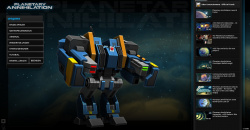

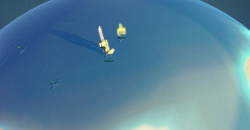
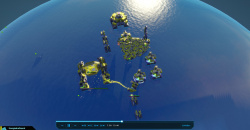
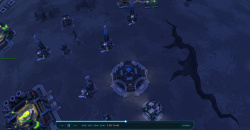

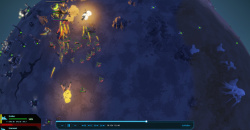

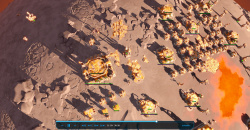
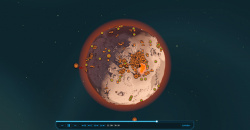
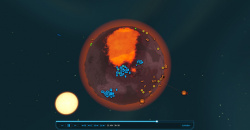
cool le jeu j'adore
gracias
cool
gg
al
asdasd
como ago pa tener el juego